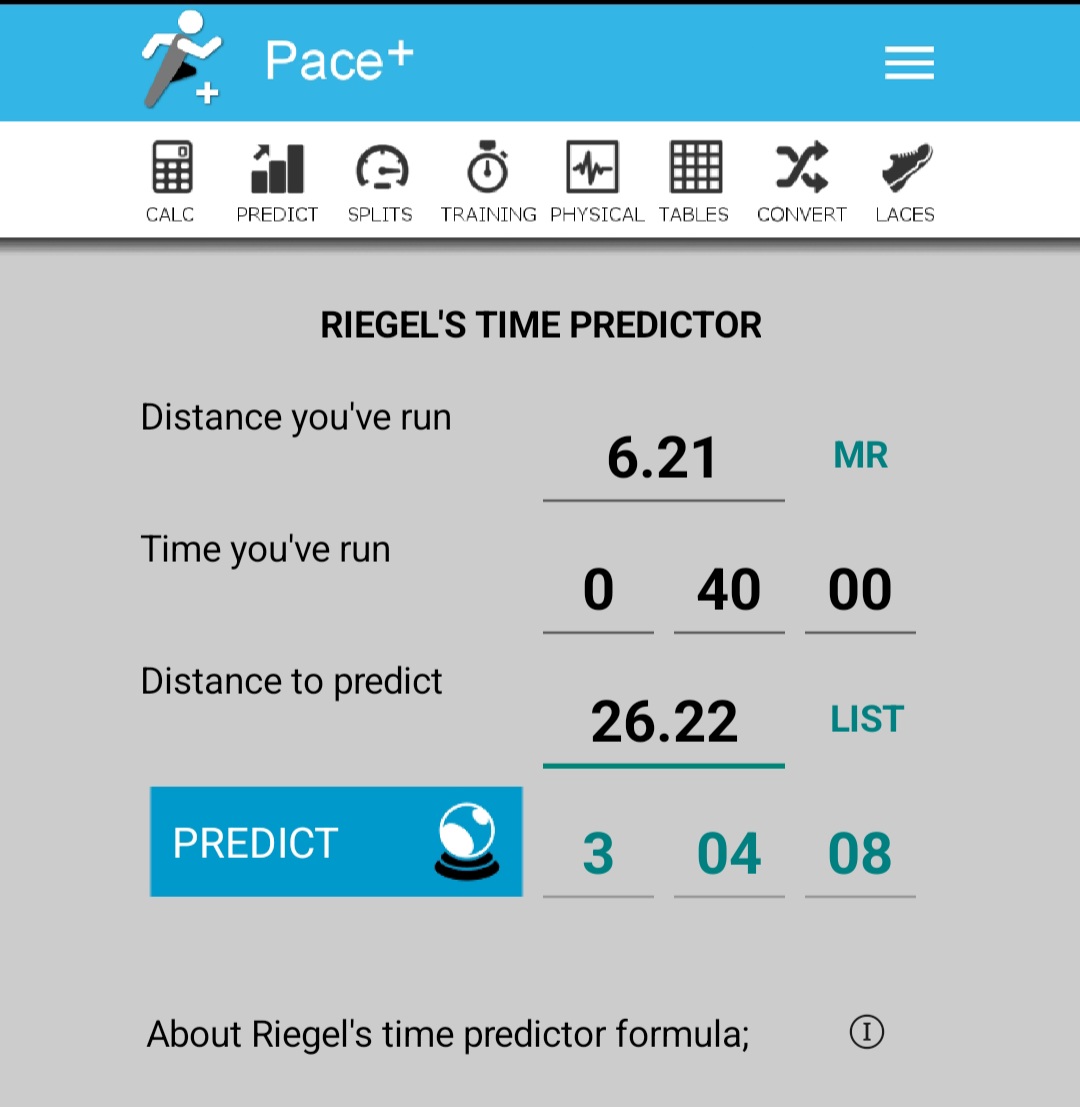In the build up to your marathon, you’ll likely have some target times in mind, but it’s common for these to fall into the categories of unambitious, or a little too ambitious, given the timeframe for improvement. It’s therefore a good idea to try one of the popular running time predictors or “calculators” to get an idea of what you could run if you want to push on.
The big 3
Riegel’s formula, Daniels’ Formula and McMillan’s Formula are the three most popular calculators used by runners and each has a slightly different way of looking at your current and future times.
Being able to accurately compare the three on a large scale is very difficult, if not impossible, due to the nature of variability in training, so a lot of runners stick with their preferred method and to be honest, that’s fine. Running is such a mental sport that comfort with what you use to train and plan with is at times as important as finding the best option.
The main caveats
The biggest issue with calculators is that they tell you what you’d be able to run with “appropriate training”, a term which is rather vague and not as clearly stated as it might be in a lot of cases. Ultimately each of us has different strengths and weaknesses, and what’s appropriate for one marathon time won’t be appropriate for another.
Equally we all have preferences in training, and things we could do better or do more of to run a faster marathon, making it wildly subjective. You might be great at doing fast efforts in training or over a 5k, but that doesn’t mean you’ll do so well mentally or physically over tempo runs or in your long runs, and could fall well short of the projected times over longer distances such as the marathon.
Marathon training and racing is also enormously influenced by your sleep and nutrition compared to training for shorter distances, even at the elite level where all the margins are small but consequential over every distance.
Using them as a planning tool
These calculators can however be very useful in setting out goals for your race, allowing yourself the chance to scale back or increase the challenge of the goals you initially had in mind.
You might even see the times and stick with an initial slower time target, making training and racing that much less pressured, which is also a perfectly valid goal to have. Whilst the fun for me is in the challenge of progression, I know that’s not everyone’s priority.
By having a realistic race time, especially if you complete a 13-20 mile race or test run a few weeks out from the race, you can get a much better idea of your fitness and then adjust your goals if needed.
Using them as a training tool
With your times potentially adjusted, you need to know what paces these equate to in mins/mile or mins/km so you can spend time working at or above this in training during intervals sessions and tempo runs, or working around these paces in your long runs.
By knowing the necessary paces, working at those paces and tracking how the sessions feel, you’ll get an even clearer picture of how your fitness compares to your goals ready for race day.
Race day tactics
With your goals set out, you can now easily plan pace strategies to help you to those goals. I’ve seen numerous people set off at unsustainable paces, only to crash and burn in the middle to end of the race which could have been avoided with better pacing, which would have come from more accurately set expectations, i.e. the use of a race time calculator.
Whilst they’re imperfect, race calculators are a very handy tool right from the beginnings of marathon training through to race day and not one you should miss out on using in my opinion.
Written by Kyle Brooks, Running Coach based in Norwich, Norfolk

